A social media audience is a group of people on social platforms who are likely to be interested in your products or services.
If they see your content on the channel(s) they use, they might remember your brand. And over time, they might visit your website and even become customers.
Your social media target audience will have certain characteristics in common. Such as age, gender, income, interests, pain points, and goals.
For example, a target audience for a luxury fragrance brand might have the following characteristics:
- Female
- Age 25-50
- Modest income
- Interested in shopping
An Instagram post that targets this group might look like this Tom Ford campaign:

Knowing who you’re speaking to on social media provides you with direction. So you can create more effective organic and paid campaigns.
More specifically, it helps you:
- Boost performance: Creating content centered around your audience and their interests can improve social media KPIs and lead to more effective social media advertising campaigns
- Identify new areas for growth: Knowing who you’re speaking to can lead to discovering new topics to expand into
- Refine your brand voice: Using audience insights helps refine your brand voice to ensure it resonates
- Build brand loyalty: Consistently sharing targeted content can build trust and loyalty
Here are three ways you can conduct audience research to gather insights about the people you want to reach on social media:
Analyze Your Competitors’ Audiences
Perform a competitive analysis to collect and evaluate information about your rivals’ social media audiences. Because they likely include the same people you want to reach.
Use our One2Target tool for this.
Enter the URL of at least one competitor to get started. Then, click “Analyze.”
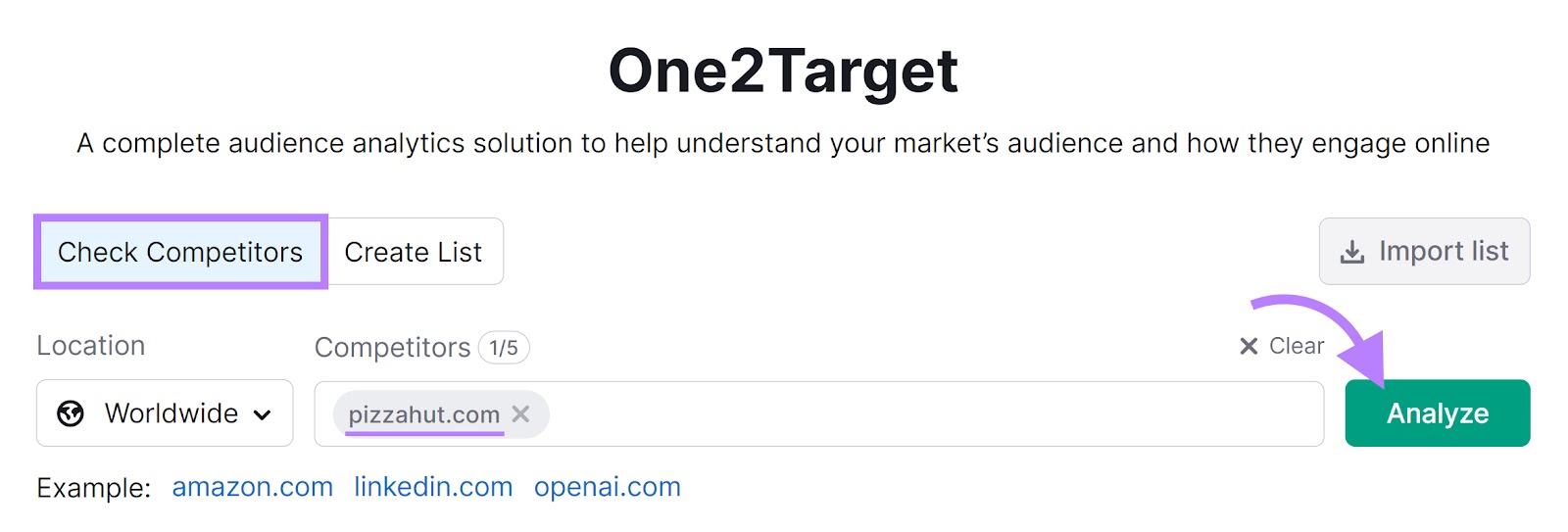
The “Demographics” tab shows you how your competitor’s audience is distributed across age and gender.
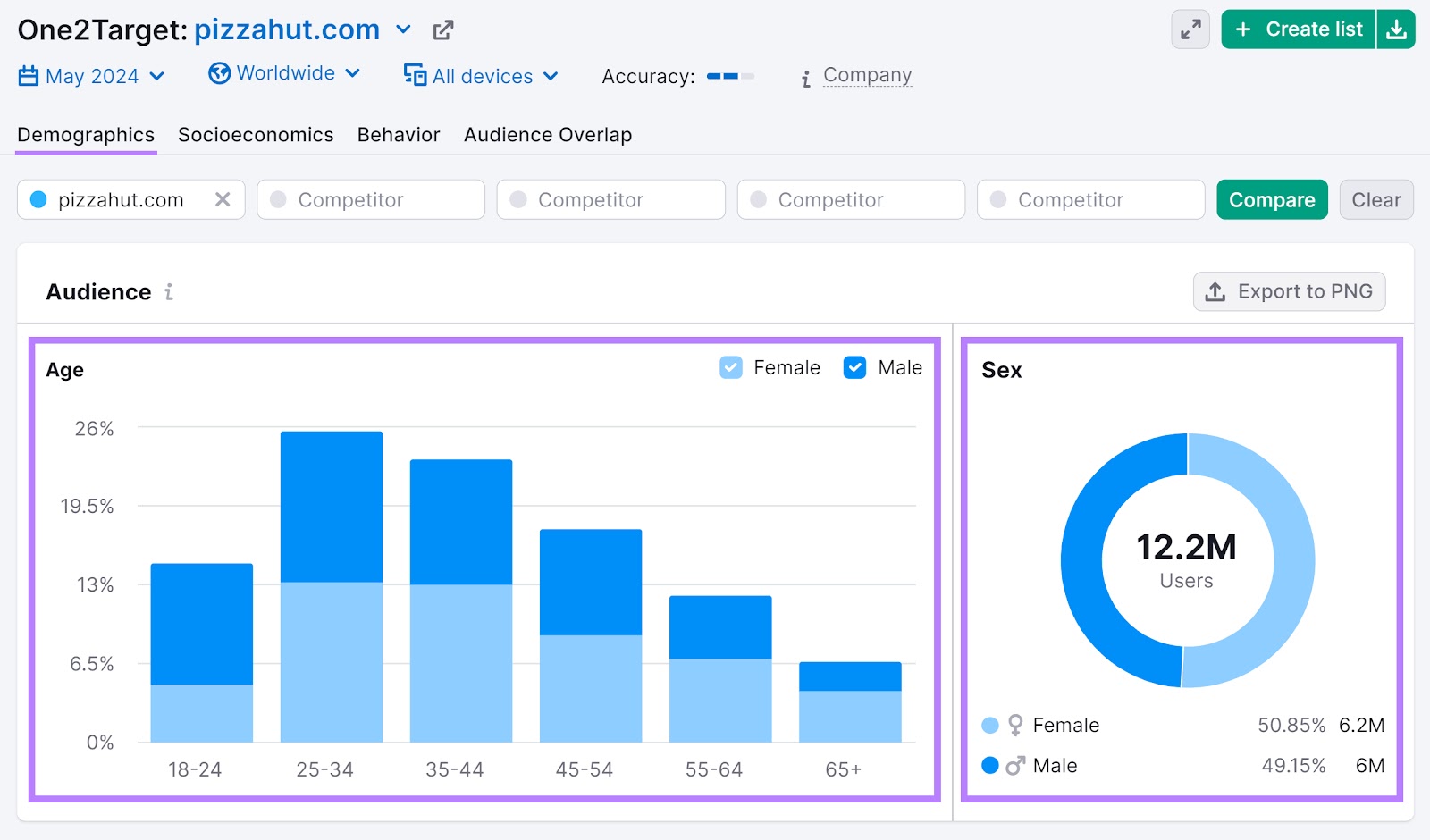
Next, scroll to “Distribution by Country.” Click the drop-down to change the map by region or country to see where your competitor’s audience lives.
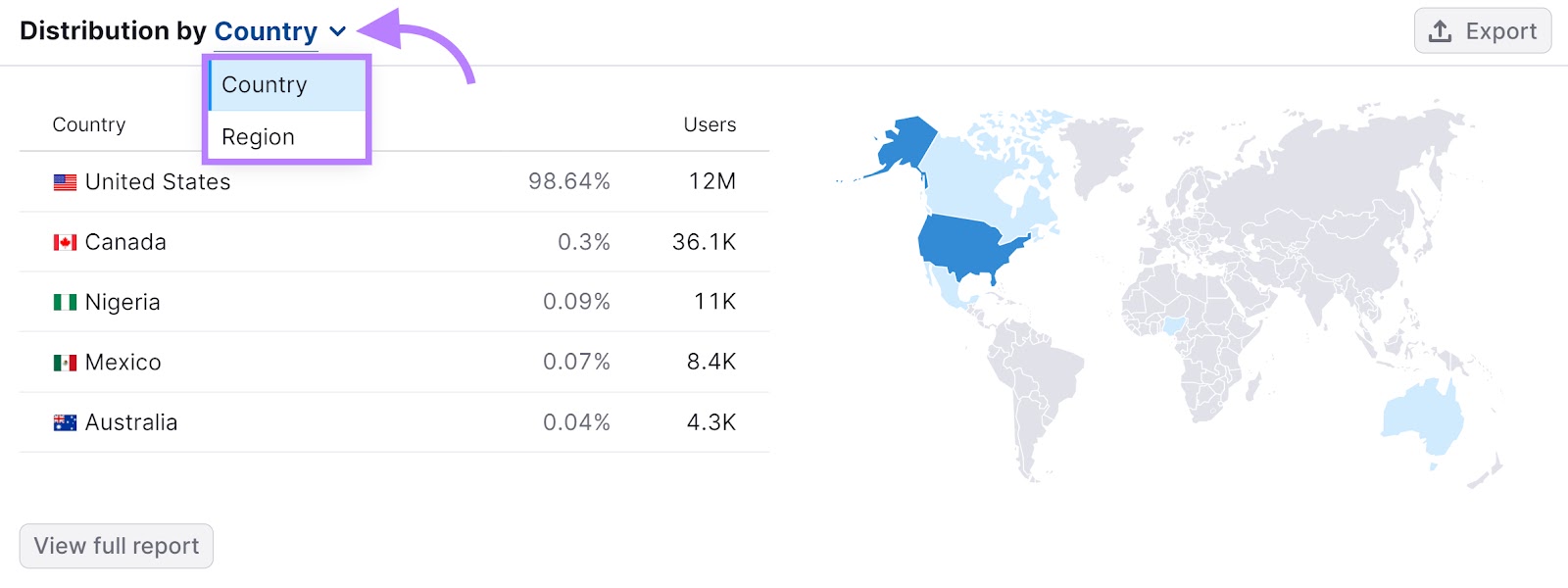
Click the “Socioeconomics” tab to see the audience’s household size and income level.

Then, scroll to see details about the audience’s employment status and education level.
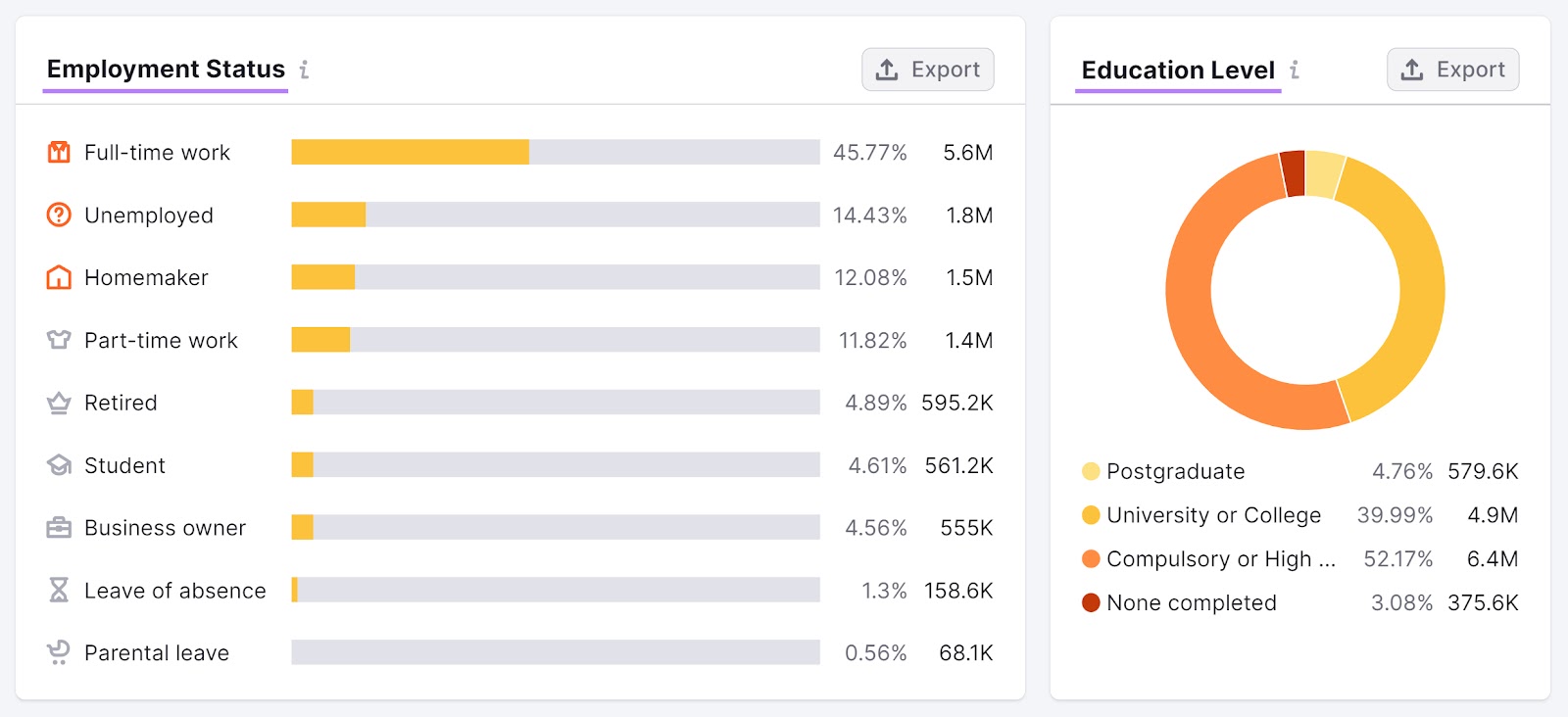
Click the “Behavior” tab to learn how and where this audience engages online.

Finally, scroll to the “Social Media” section to see a breakdown of the audience’s preferred social media channels.

Use these insights to inform your social strategy.
For example, if a close competitor’s audience is most active on YouTube, it’s a good idea to prioritize that channel.
Study Your Existing Social Audience
Look at your social media analytics to understand who already sees and engages with your social media content. To build a more complete audience profile.
You can get started with the native analytics from social media platforms. Like Meta Business Suite’s insights. Which shows you information about your audience’s age, gender, and location.
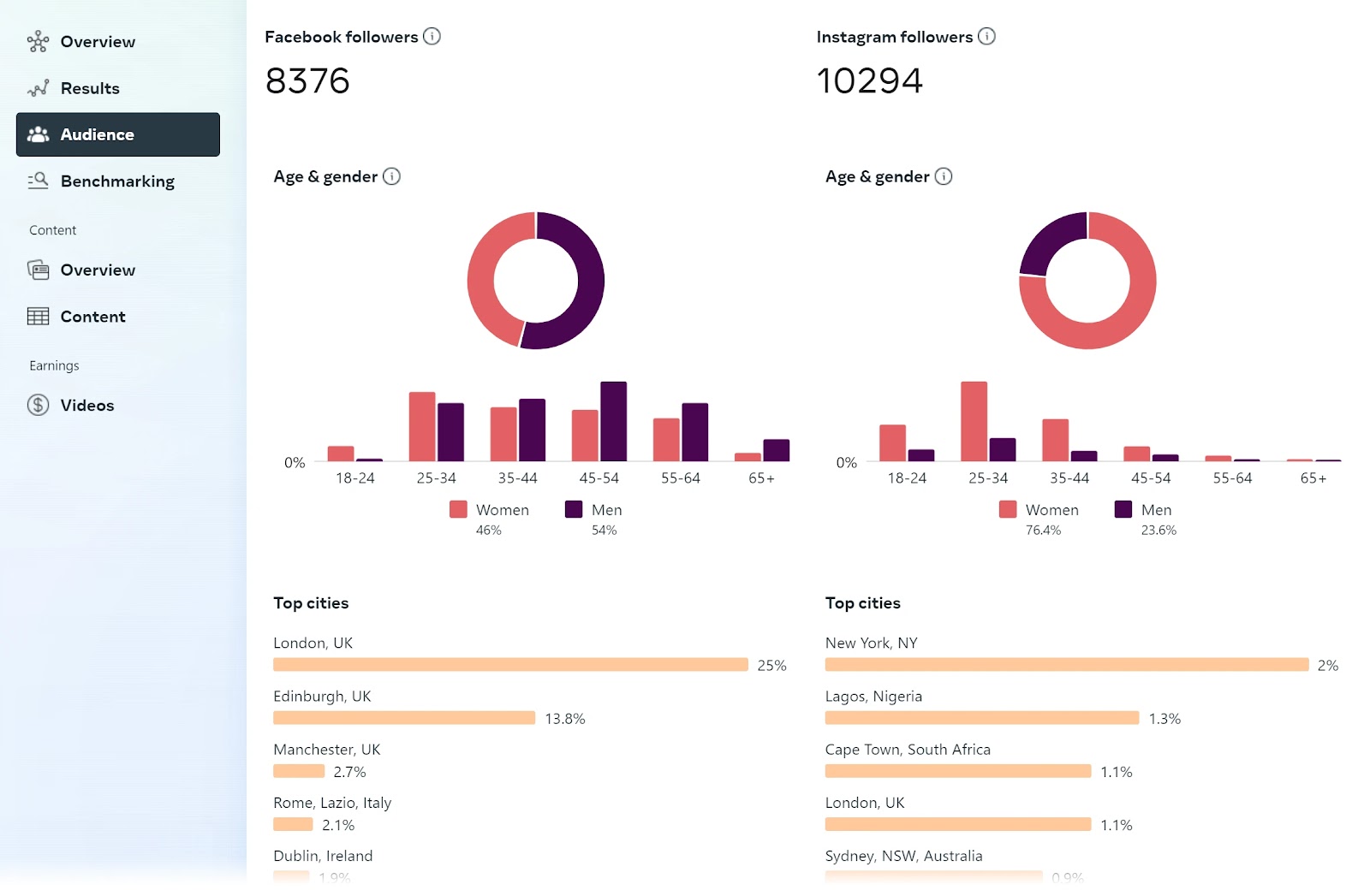
But Social Analytics (part of Semrush Social) streamlines your research. By letting you analyze data across your social accounts in one place.
The “Overview” tab summarizes your Facebook, Instagram, and LinkedIn accounts. And provides information on follower growth, reach, and engagement rate for each.
There’s also an option to export information into a CSV file. Which is helpful for conducting a social media audit.
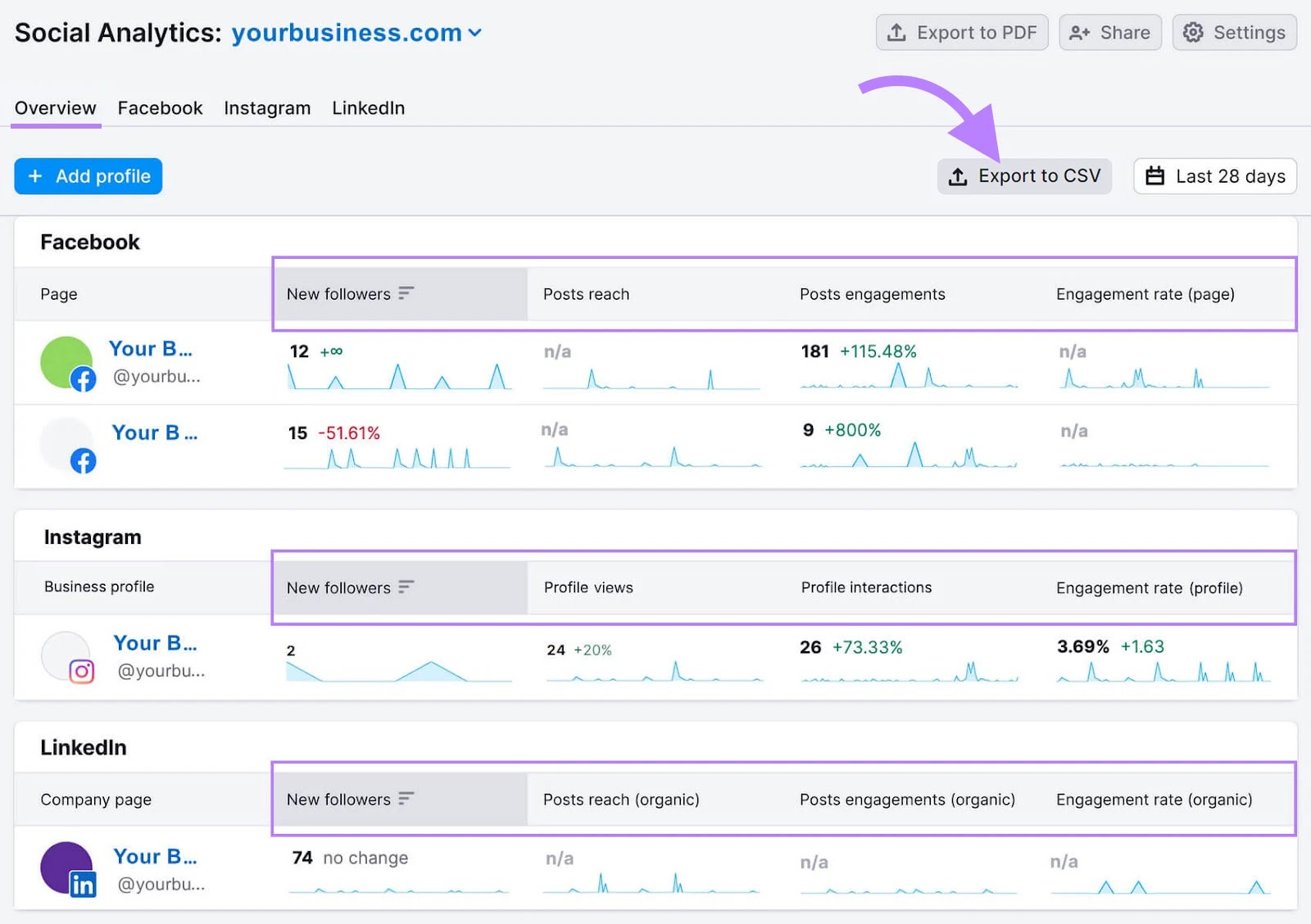
Click on a specific platform to see information about your audience’s:
- Location
- Gender
- Age
- Peak activity time
Knowing your audience’s most active hours on social media lets you know when it might be best to schedule your posts for the best reach and engagement.
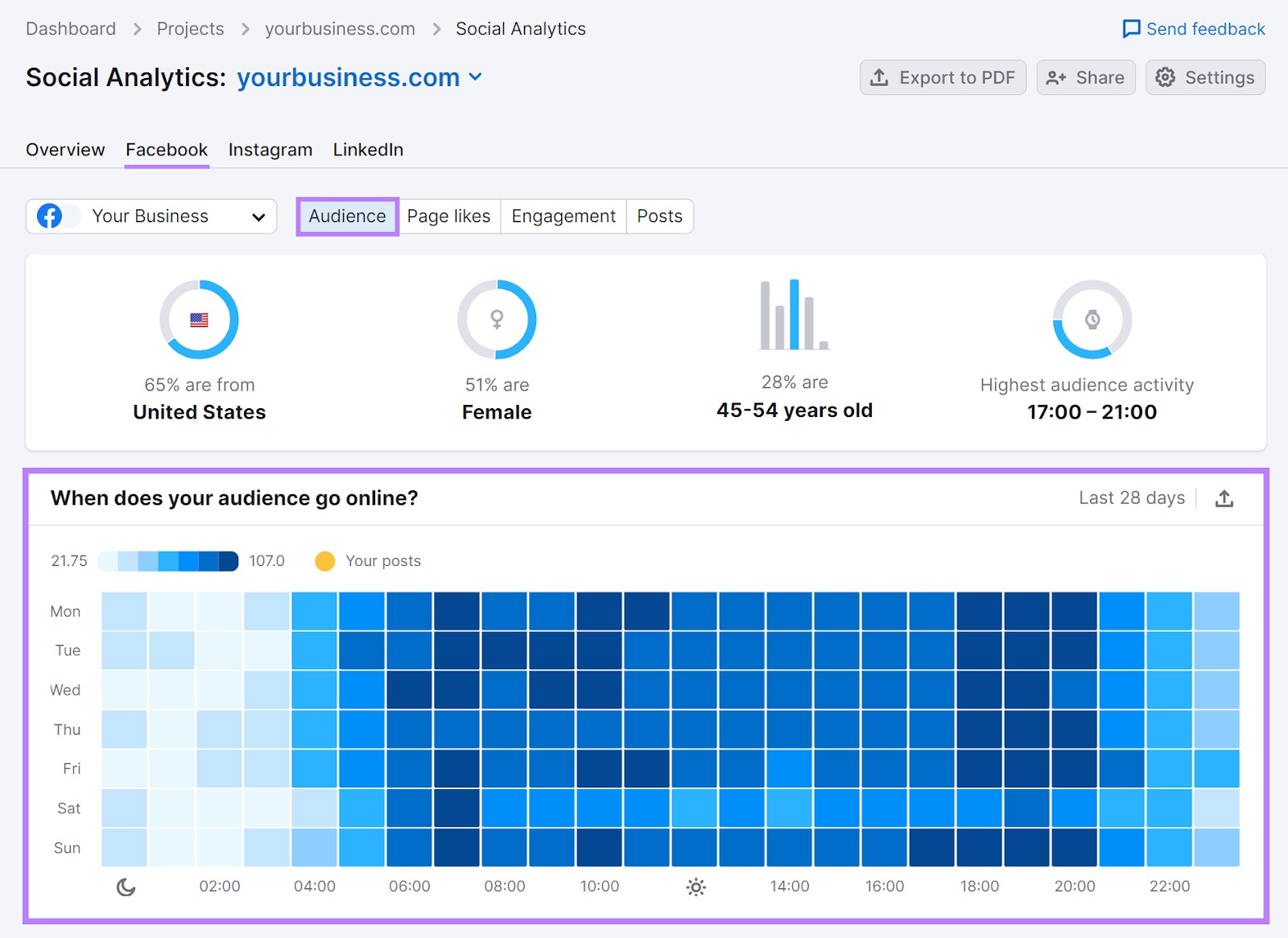
Use Social Media Listening
Social media listening is the process of monitoring and analyzing online conversations on social platforms. To learn what audiences care about and how they perceive your brand.
Start with monitoring brand mentions to see the conversations that are specific to your business.
For example:
- How do people talk about your brand? Is it positive or negative?
- What’s their tone of voice? Are they sarcastic or sincere?
- What language do they speak? What slang do they use?
That information can inform how you interact with your audience.
See how Fenty Beauty responds to a comment in a brand voice that matches how their audience communicates?
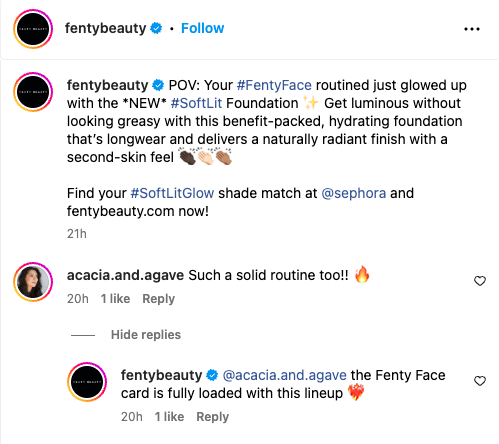
Use the Media Monitoring app to automate the process.
Here’s how it works:
Enter your brand name into the tool’s text field.
Then, click “Create Project.”
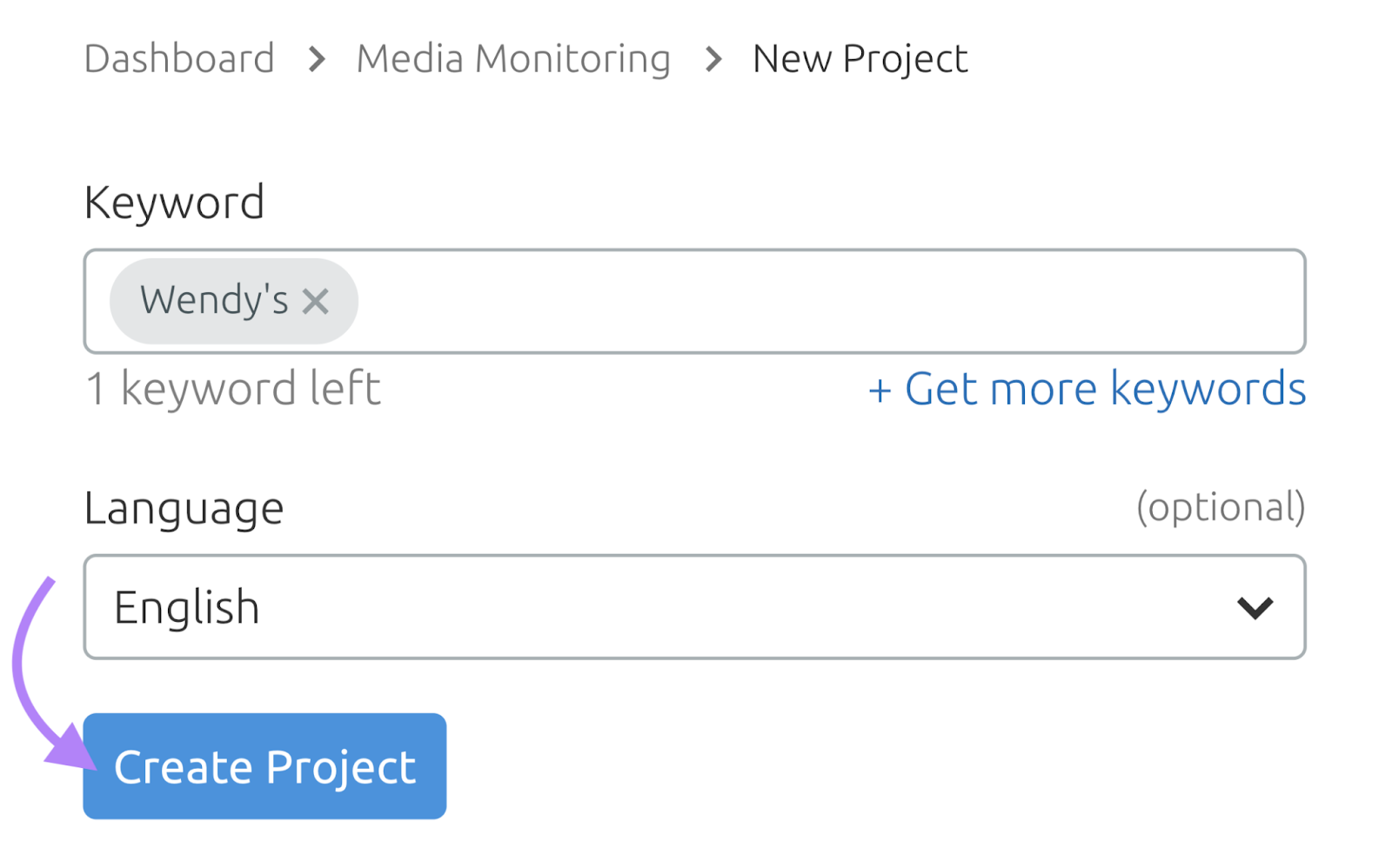
Media Monitoring will look for mentions of your brand and generate a report.
The “Summary” tab shows the latest conversations related to you. And a graph of mention volume by date.
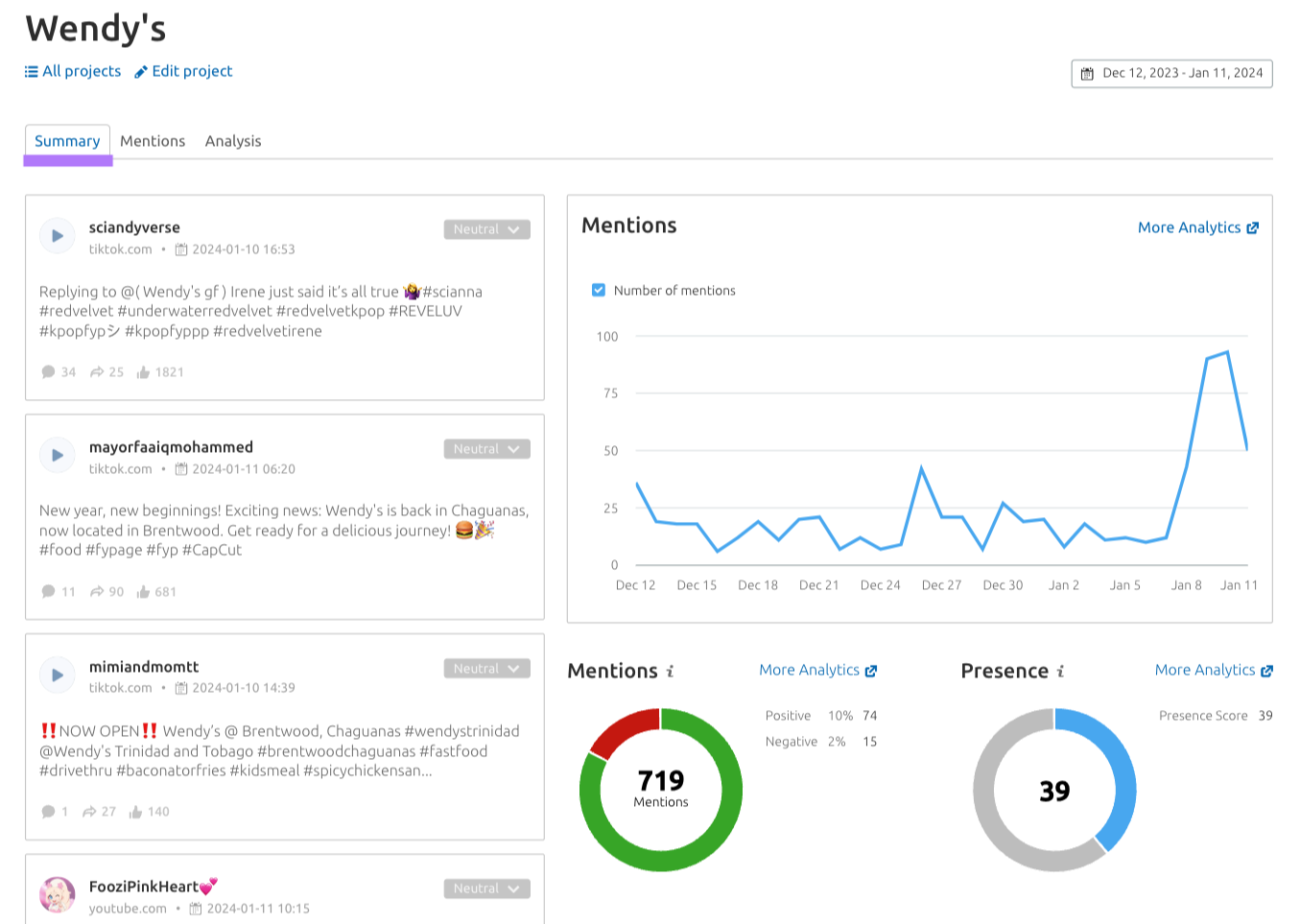
Click the “Mentions” tab to review all your mentions sorted by date. And see the sentiment for each one: neutral, positive, and negative.
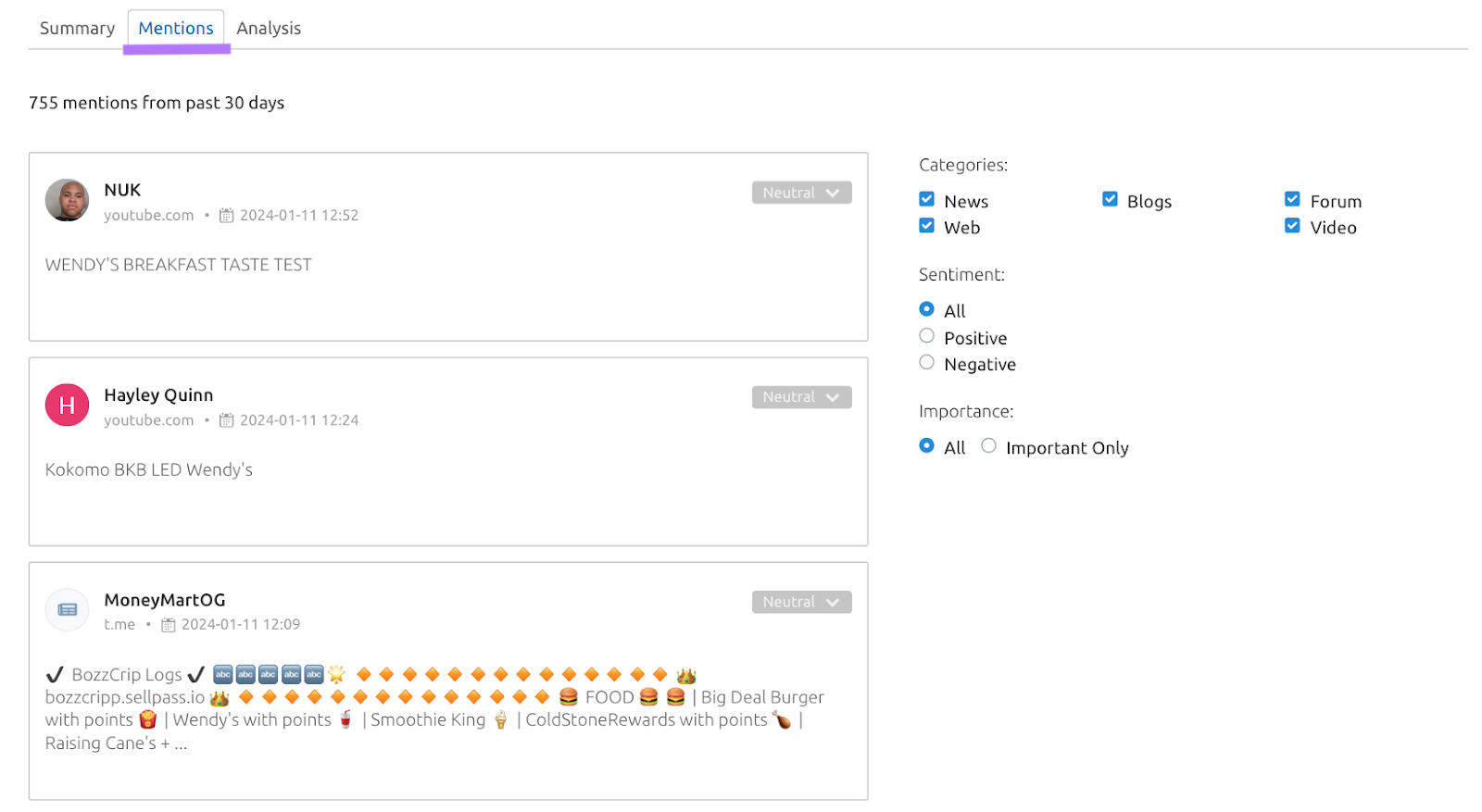
Click on the “Analysis” tab to learn more about your brand’s reach, how people feel about your business, and the most influential websites that mention your brand.
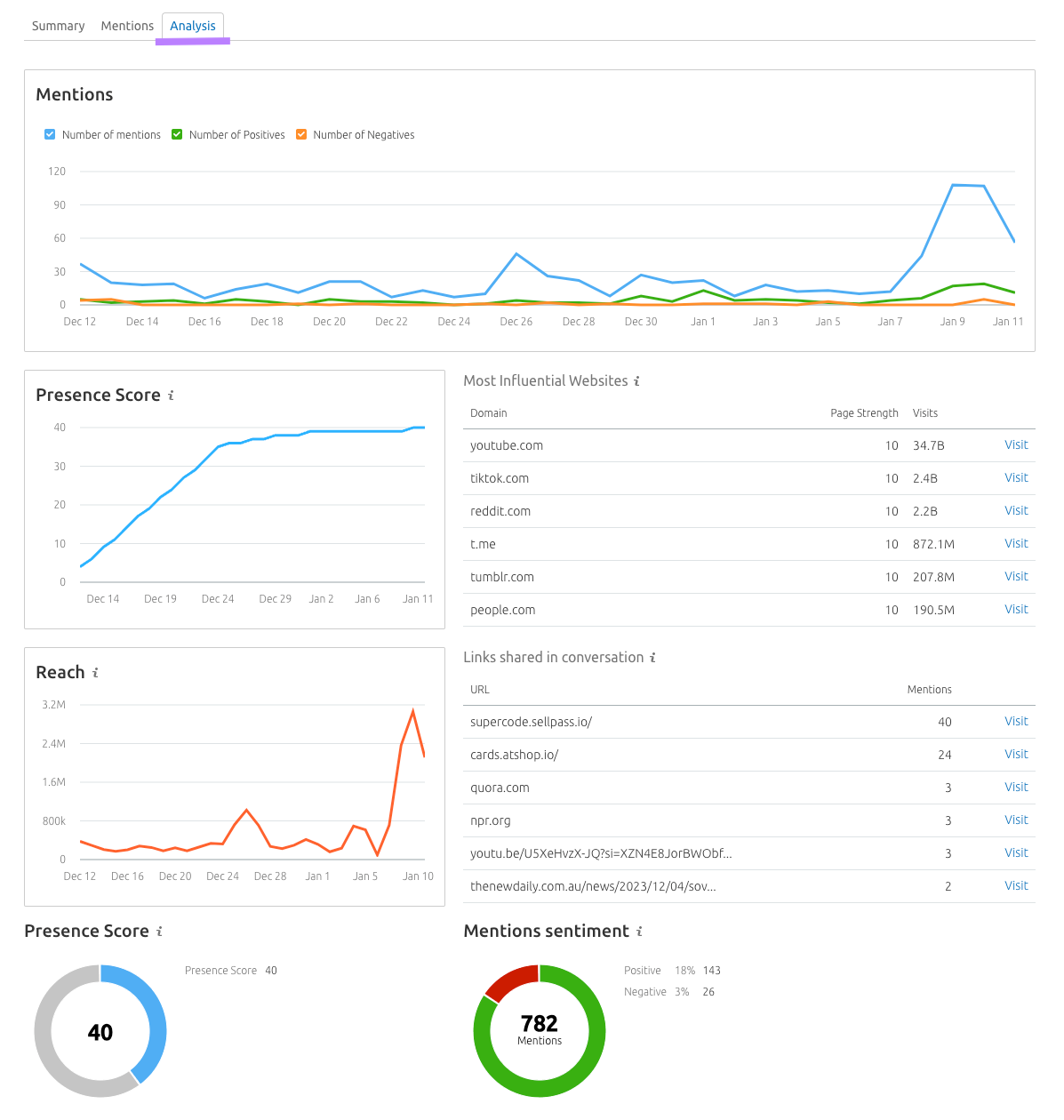
All this information helps you gain a fuller understanding of who knows about your brand. And what you can do to engage with them.
Consider setting up monitoring for relevant keywords as well. Because keeping tabs on those conversations can provide insights to help you create content that resonates and drives engagement.
For example, Beyond Meat knows its audience is interested in sustainability. So, the brand shared its emissions savings on Instagram.

Now that you have a better understanding of who your audience is, it’s time to connect with them.
Here’s how:
Create Content That Aligns with Your Audience
Share content that’s curated around your audience’s preferences and interests to capture their attention. To get more engagement that may translate to tangible business results over time.
For example, our audience consists of digital marketers and business owners. We know the pain points they face daily, so we created a humorous post about it on Instagram.
And it got nearly 1,500 likes.
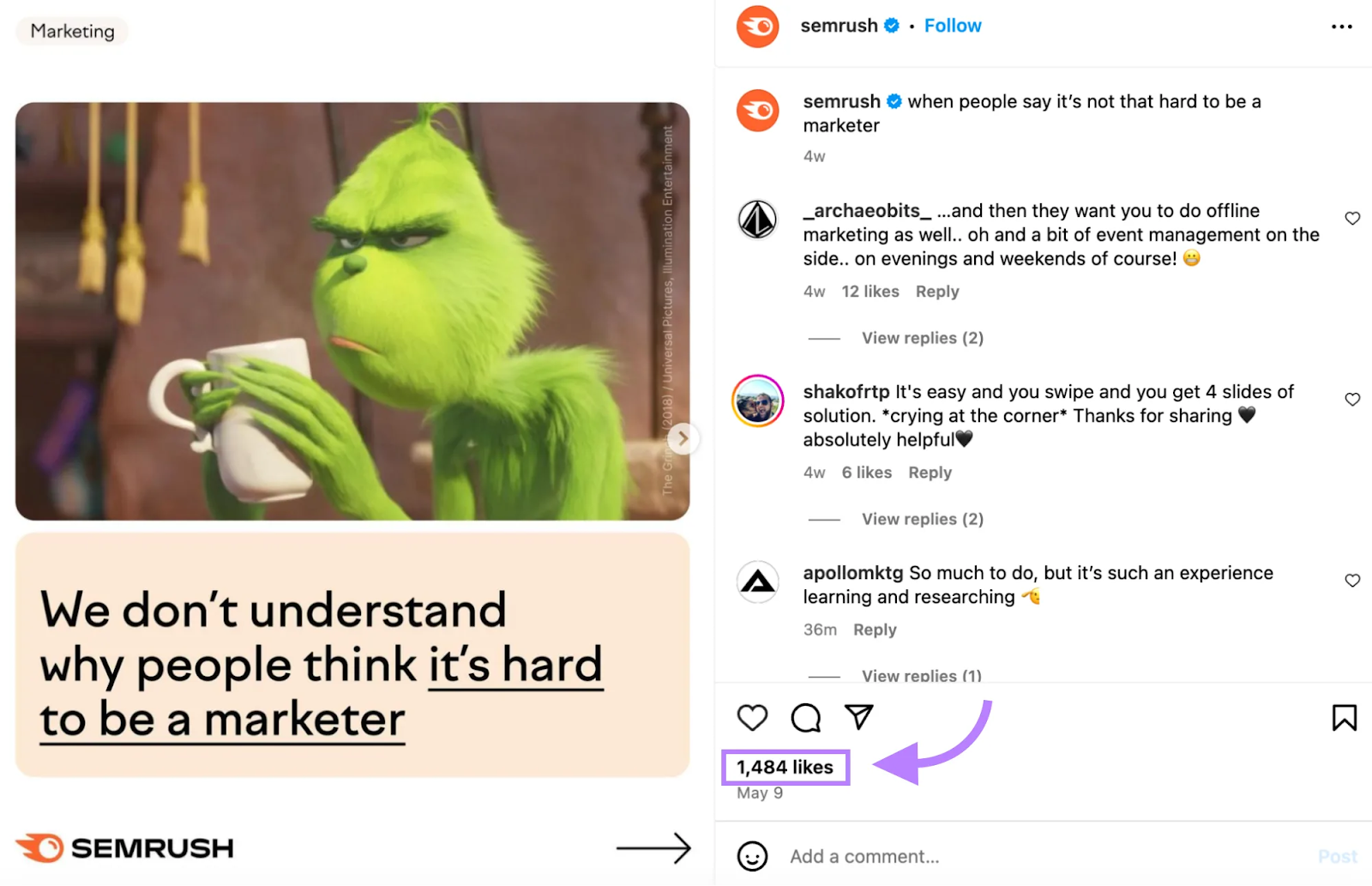
Then, plan your content in a social media content calendar to make sure you’re covering a variety of topics. And to stay organized.
When you’re ready to start creating and scheduling, use Social Poster (part of Semrush Social) to manage content across Facebook, Instagram, LinkedIn, X, Pinterest, and your Google Business Profile.
Hover over the day you want to schedule a post and click the “+” icon at the top right.
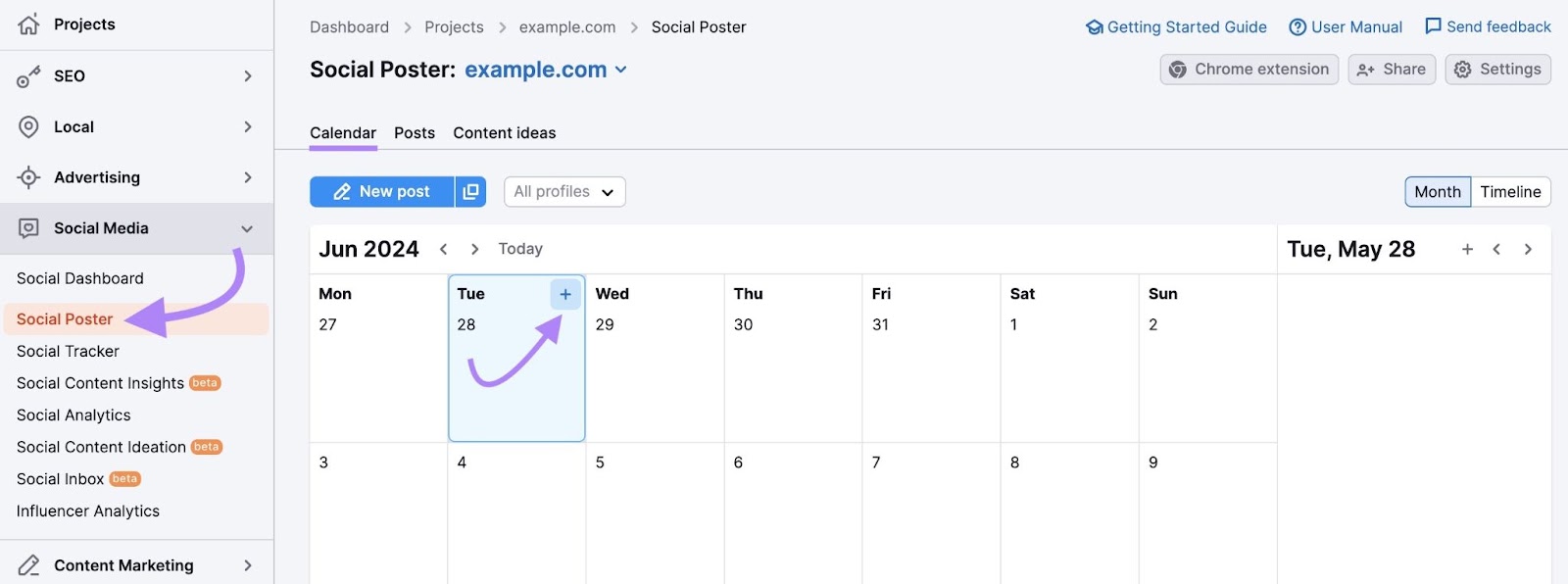
Choose your desired platforms. Enter your text, images, links, etc.
Then, set a publishing time and click “Schedule.”
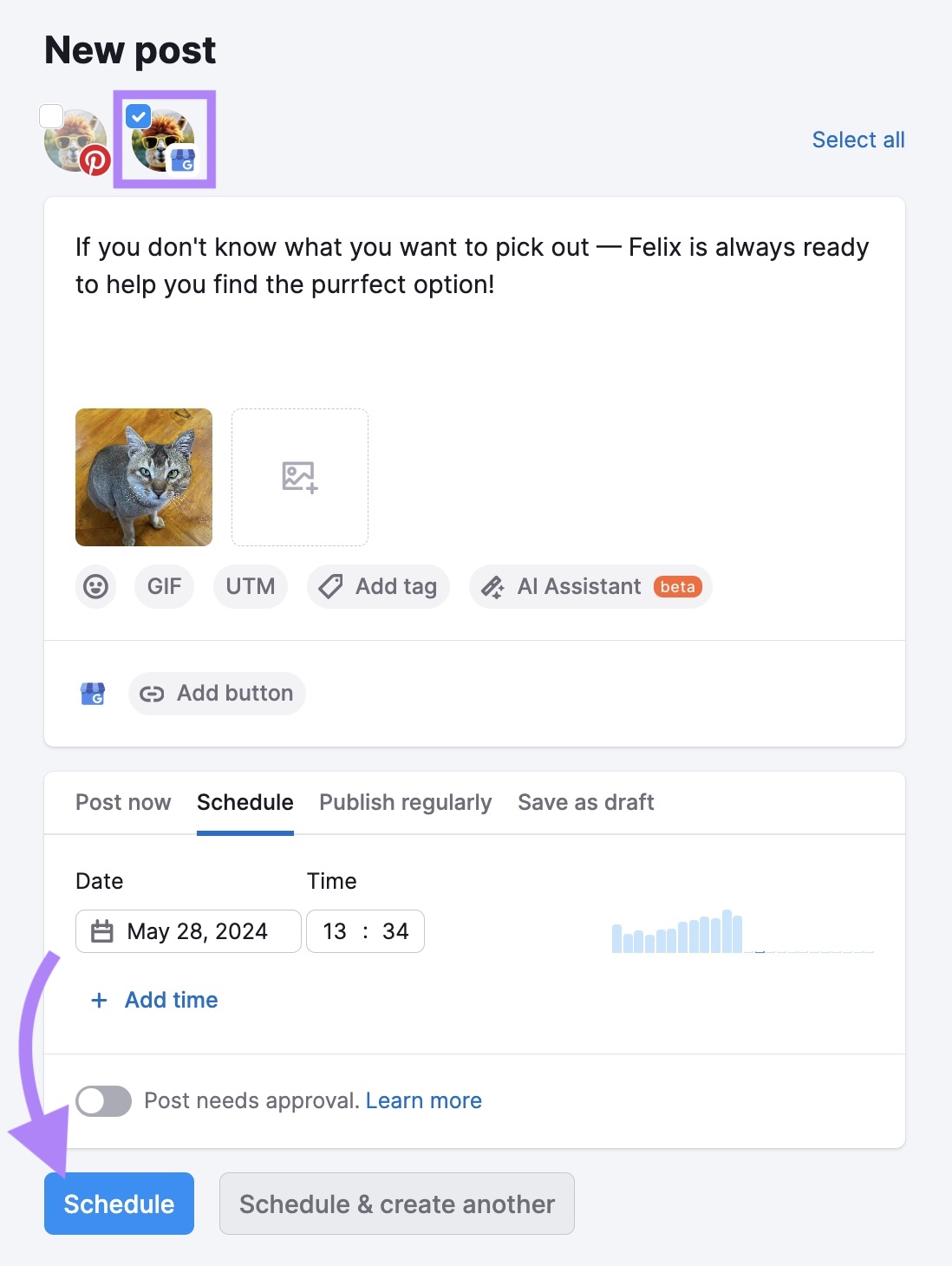
Create a Hashtag Strategy
Hashtags are identifiable markers you can add to your social media content and campaigns. They help organize social media content. And make it more discoverable.
For example, a hardware store might use #DIY or #DIYProjects in their content.
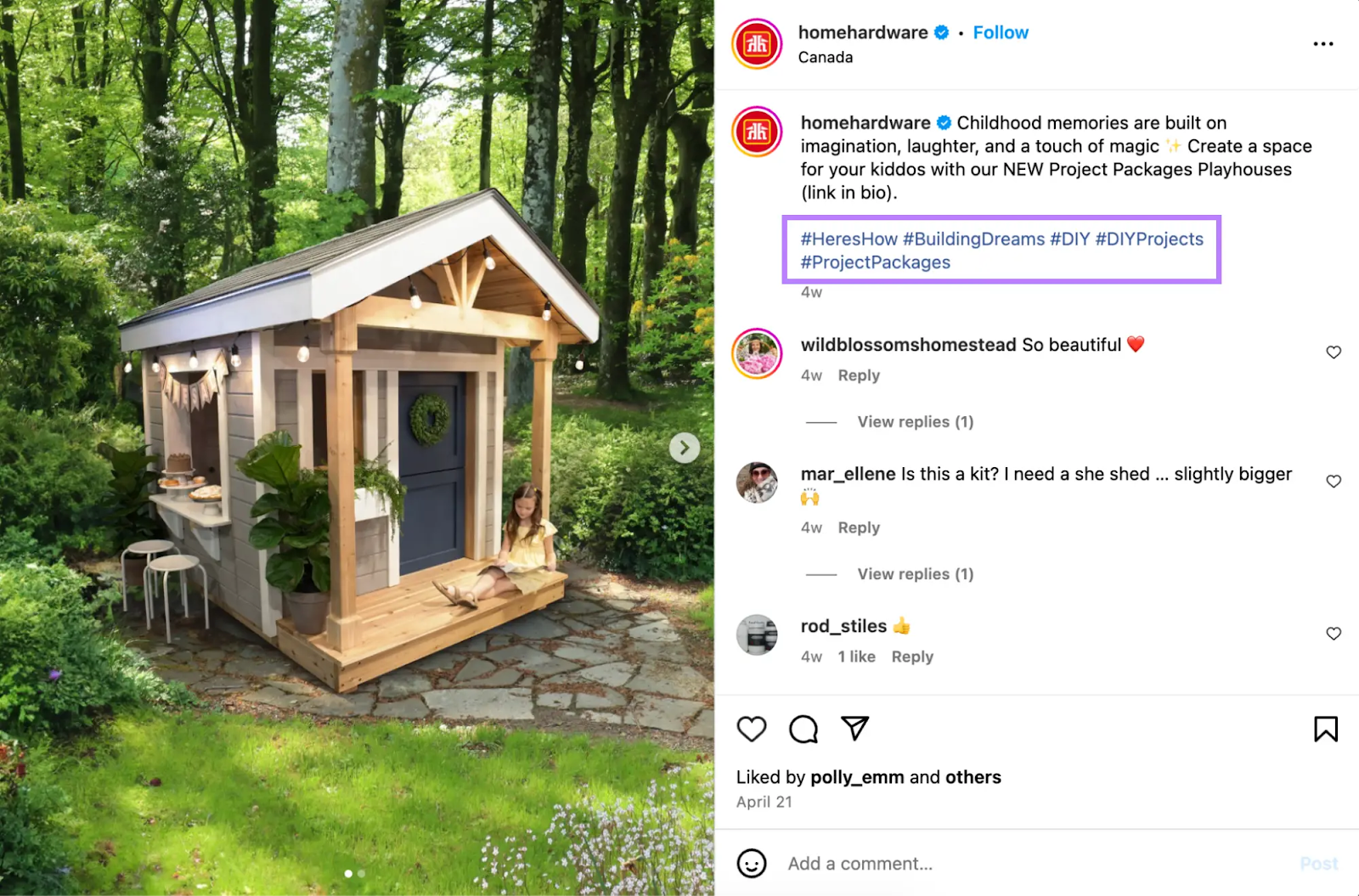
If you need help identifying good hashtags, review your competitors’ accounts to see which ones they use.
Learn from Your Competitors
Conduct a social media competitive analysis to understand how rivals reach and engage a social audience. So, you can replicate these wins for your own business.
For example, you might learn that a competitor predominantly uses video content in their X posts. Which generates a high engagement rate.
Use Social Tracker (within Semrush Social) to see your closest competition’s content types and engagement rates.
Add the companies you want to analyze. Then, click “Start tracking companies.”
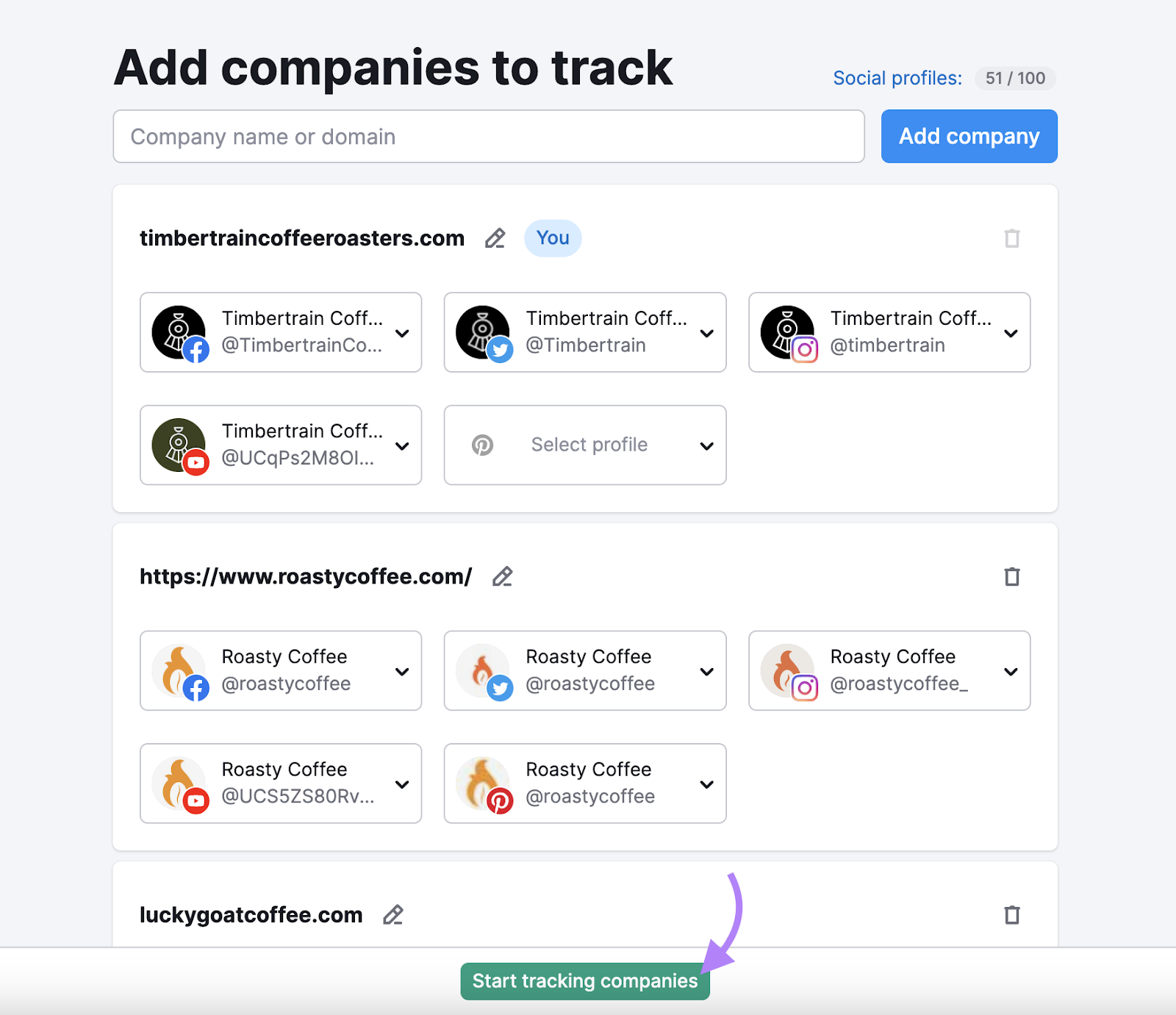
From the “Overview” tab, choose a platform you want to evaluate.
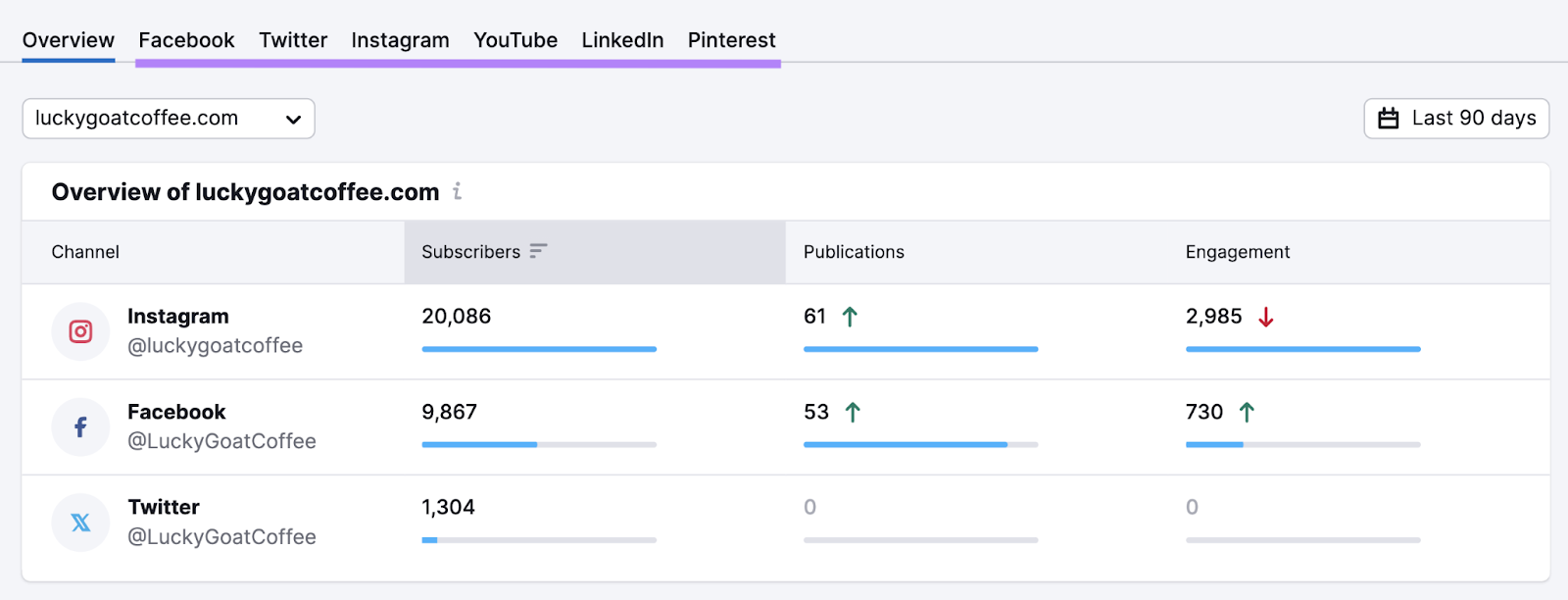
Then, click the “Engagement” tab to see specific engagement metrics for that platform. Like reactions, comments, and shares.
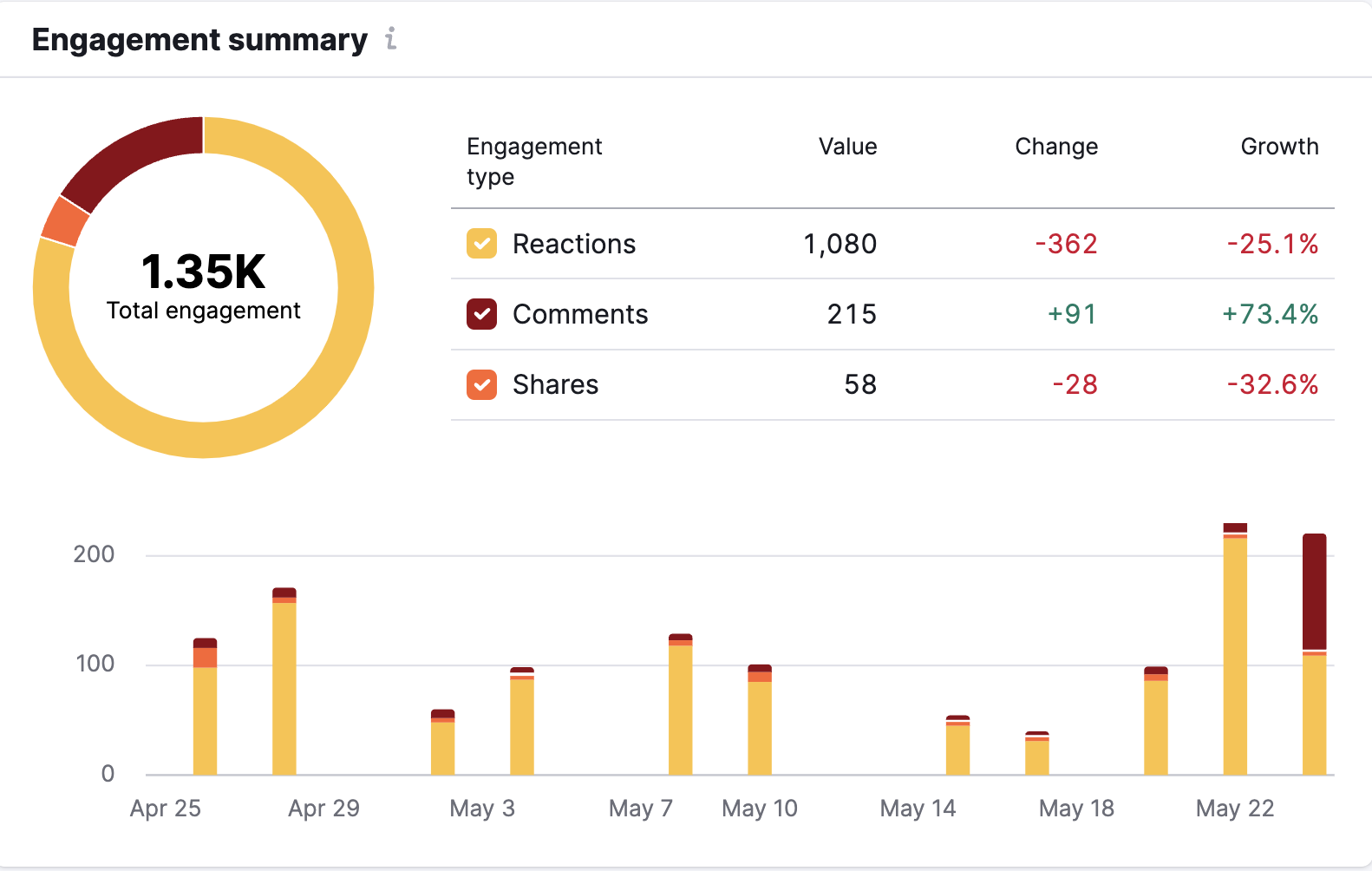
Compare these data points to your own to see how your social presence stacks up. And make adjustments that might help you better engage with and convert your social media target audience.
Run Social Media Advertising Campaigns
A social media advertising campaign gets your business in front of a very precise target audience.
For example, Meta lets you target ad campaigns based on:
- Education level
- Income
- Marital status
- Job
- Interests
- Location
- Age
- Gender
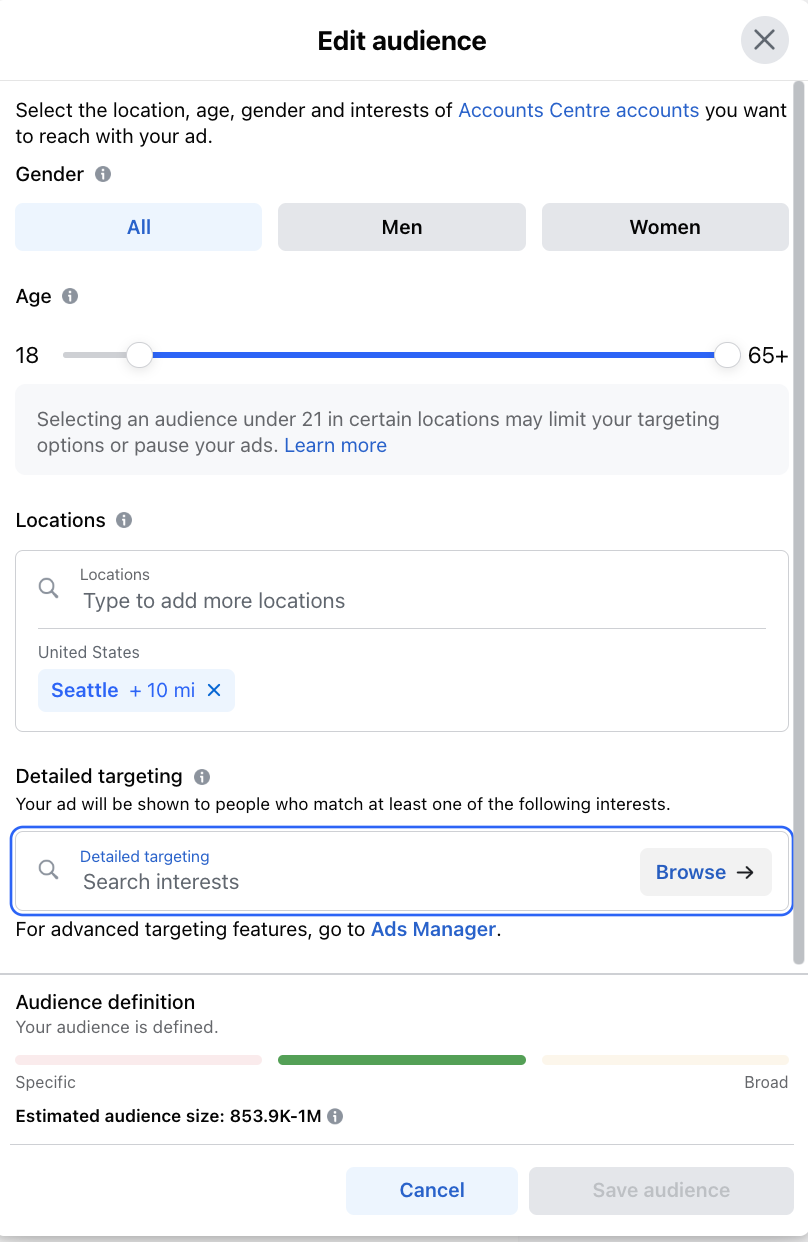
And now that you know a lot of details about your intended audience, you can apply that to your ad targeting. To drive better performance.
Experiment with different ad formats to see which one resonates most with your target audience. Like carousel ads and sponsored posts.
For example, home-swapping platform Kindred created a Facebook advertising campaign to promote an article that likened its platform to a classic romantic comedy.
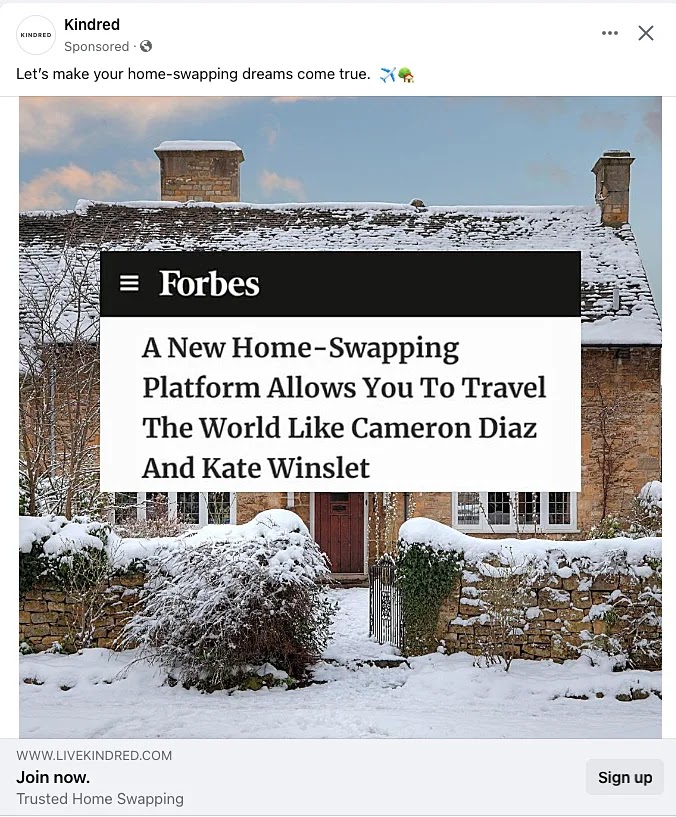
This pop culture reference will likely resonate with Kindred’s audience.
Understanding your social media audience and acting on that information is easy when you have the right tools.
Semrush Social comes with built-in analytics, scheduling, competitive analysis, and more. To help you create effective campaigns.
Try it today.




